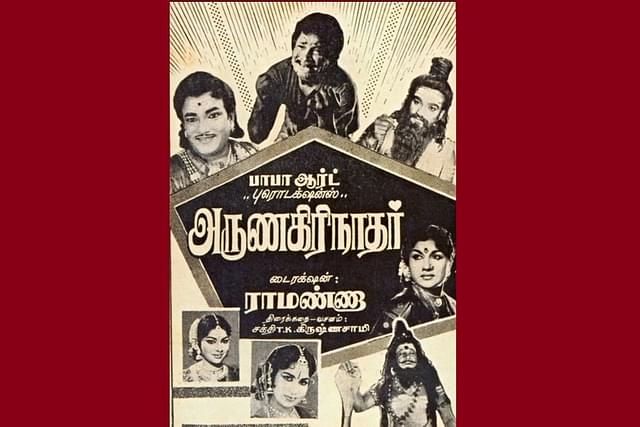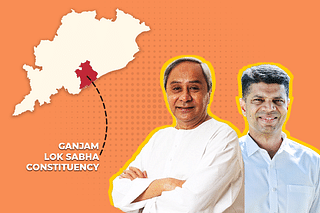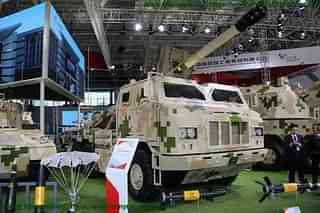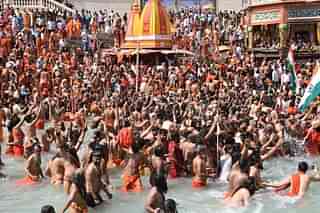Culture
A Movie That Weakened The Dravidian Hold On Tamil Film Industry
K Balakumar
Apr 27, 2024, 01:53 PM | Updated 01:53 PM IST
Save & read from anywhere!
Bookmark stories for easy access on any device or the Swarajya app.

All through the 1950s, Tamil cinema had moved into the grip of the Dravidian forces.
The arrival of powerful writers like C N Annadurai, M Karunanidhi, and actors like M G Ramachandran (MGR) and Sivaji Ganesan, had captured the imagination of the general public.
Tamil cinema, which was dominated by mythologicals and musicals, especially of the bhakti variety in the 1940s, was now fully focused on social dramas and emotional potboilers.
It was at this juncture that director T R Ramanna began to harbour ideas on a full-fledged musical filled with bhakti and traditions that are so unique to Tamil Nadu, but one sought to be suppressed by a new political ideal that was taking root in the state.
Now, Ramanna was emboldened by the moderate success of the movie on Lord Muruga folk tale, Sri Valli. The 1961 film, with Sivaji Ganesan in the lead, was not a major success. But it also showed that bhakti movies as a genre were not totally dead.
Ramanna, who was the brother of T R Rajakumari (Tamil cinema's first dream girl) and the co-brother of nagaswaram maestro Karukurichi Arunachalam, by the early 1960s had also created a name for himself as a bankable director (the man who helmed Koondukili in 1954, the only film to have had both MGR and Sivaji in the cast).
As Ramanna was looking for a subject that would work as a musical and also an emotional and bhakti story, someone suggested he makes a film on Arunagirinathar.
The 14th century saint-poet whose rhythm-filled lines on Lord Muruga (as part of his remarkable Thirupugazh) belongs to the gravitas-filled Tamil bhakti lore.
But two films had already been made on Arunagirinathar — both incidentally in the same year 1937 (Bhakta Arunagiri and Arunagirinathar). Those two movies, of course, were not well known and had been confined to obscurity.
TMS Was Tailor-Made For The Role Of Arunagirinathar
Slowly Ramanna was convinced about making the dramatic and impactful life and story of Arunagirinathar as a movie. But his dilemma now was in casting. Who will play the eponymous Arunagirinathar?
Sivaji Ganesan who understood bhakti literature would have been the obvious choice. But Ramanna reckoned that someone in the mould of M K Thyagaraja Bhagavathar who can sing and also play the main role would be more apt.
The name of T M Soundararajan (TMS), who had by then established himself as the playback voice of both MGR and Sivaji, was naturally taken into consideration. TMS was also no stranger to acting. Just in 1962, he had acquitted himself well in the film Pattinathar (a devotee of Lord Shiva).
When Ramanna broached the idea of the film with TMS, the latter, who was a staunch devotee of Lord Muruga, was only too pleased to get on board. The other thing that Ramanna was very keen on was music, and he roped in the veteran G Ramanathan, a real master in tuning Carnatic raga-based numbers.
The lyrics, apart from the original lines from Arunagirinathar's weighty works, were left in the hands of Sakthi Krishnaswamy, who was also in charge of the script. Krishnaswamy was a legend and had made a name for himself with historicals and mythologicals (Veerapandia Kattabomman and Karnan are cases in point).
But quite early Ramanna ran into problems. Music director Ramanathan fell ill quite early and a new music director had to be brought in. In a moment of inspiration, Ramanna chose T R Pappa, an underrated composer who has been in the scene since the early 1950s.
Pappa proved to be an ideal replacement for Ramanathan as he quickly understood the natural cadence inherent in Arunagirinathar's lines. His music sought to use the innate rhythm of the verses. (Thiruppugazh naturally lends itself to various talas, and is sometimes called 'Thalamaligai').
The most famous of the songs has to be Muththaitharu Paththithala, a veritable tongue-twister. Set fittingly in raga Shanmukhapriya, the difficult song was apparently rendered in a single-take by TMS after he got the song annotated by Kripananda Variyar.
As per the story, Arunagirinathar who was living a life of debauchery, has a change of heart. Lord Muruga appears in front of him and writes on his tongue with his celestial spear. Arunagirinathar immediately belts out this resounding and exuberant song.
The song is full of depth, both musically and emotionally, that the Carnatic musicdom has totally accepted it in its original form. Almost all top Carnatic music performers have presented this song in their concerts. That is its hallmark.
Apart from the Thiruppugazh in the film, the song Aada Vendum Mayile (in chaste raga Bhairavi) underscores the film's musical heft with both TMS and S Janaki in great form.
The melody song Nilavo Aval Irulo (TMS and P Susheela) though seems to be a reprise of the Salil Chowdhury classic Tasveer Teri Dil Mein (Lata Mangeshkar and Mohammed Rafi) in the 1961 Hindi movie Maya.
The Legend Of Arunagirinathar
The thing about poet Arunagirinathar was that his life story had many versions but not a definitive one. Ramanna struck to the popular one. The saint poet is said to have travelled the length and breadth of Tamil Nadu even in those times, beginning from Vayalur.
He is reported to have visited the six most sacred abodes of Lord Muruga, Thirupparankundram, Thiruchendur, Palani, Swamimalai, Thiruthani, Pazhamudhir Cholai, 216 holy shrines of Muruga, Shiva and other deities, composing songs on the significance of each.
He is believed to have composed over 16,000 songs covering all aspects of life but only 1,365 songs have so far been traced, according to most chroniclers.
Arunagirinathar's Thirupugazh also deals with Lord Shiva's Thiruvilayadalgal and also carries references to Ramayana and the Bhagavatham.
Apart from Thirupugazh, Arunagirinathar authored Kandhar Alangaram, Kandhar Anubhoothi, Kandhar Andhathi, Viruthams on Vel and Mayil. Arunagirinathar also saw Lord Muruga and Lord Vishnu as part of the same manifestation, and hence many of the Thirupugazh songs have him addressing Muruga as Perumal.
Though the film did not go into every aspect of the musical and lyrical greatness of Arunagirinathar's weighty works, it did not do his legacy any great damage. The film Arunagirinathar, upon its release in 1964, had a mixed run. The Tamil magazines appreciated its music and script, but the movie was not a major success.
However, the impact of the film was important in those circumstances. The film managed to rekindle the interest of the public in bhakti-soaked musicals, a tradition that looked lost to Tamil cinema.
Ramanna's work proved to be an inspiration for the likes of directors A P Nagarajan, who quickly got down to making films filled with religious riches of Tamil Nadu, and the genre was revived, much to the consternation and disappointment of the Dravidian types.
The singer Sid Sriram recently belted out a Thirupugazh at Coachella. Arunagirinathar at a global fest was fitting, and a moment of pride for Tamils who value music, poetry and prosody. It was also, in a sense, a tacit tribute to Ramanna and TMS who in their own right did their bit to spread the glory of a great saint poet of the land.
Save & read from anywhere!
Bookmark stories for easy access on any device or the Swarajya app.
Support Swarajya's 50 Ground Reports Project & Sponsor A Story
Every general election Swarajya does a 50 ground reports project.
Aimed only at serious readers and those who appreciate the nuances of political undercurrents, the project provides a sense of India's electoral landscape. As you know, these reports are produced after considerable investment of travel, time and effort on the ground.
This time too we've kicked off the project in style and have covered over 30 constituencies already. If you're someone who appreciates such work and have enjoyed our coverage please consider sponsoring a ground report for just Rs 2999 to Rs 19,999 - it goes a long way in helping us produce more quality reportage.
You can also back this project by becoming a subscriber for as little as Rs 999 - so do click on this links and choose a plan that suits you and back us.
Click below to contribute.





